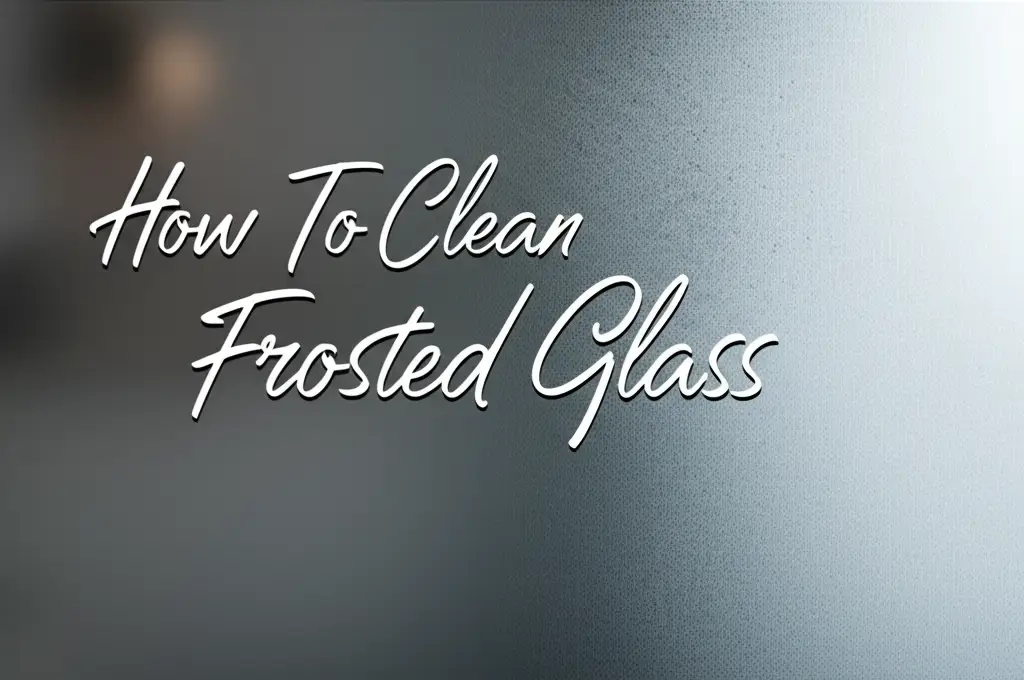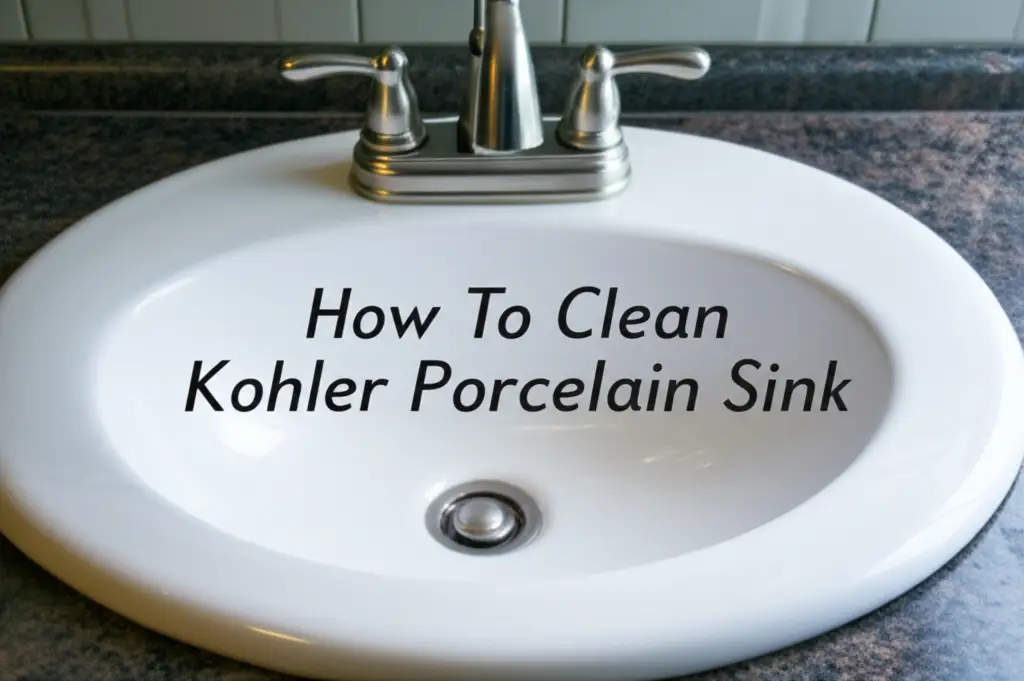· Home Cleaning · 16 min read
How To Clean Glass Table Top

Achieve a Crystal Clear Glass Table Top
A glass table top adds beauty to any room. It brings light and a sense of openness. But glass surfaces show every smudge, fingerprint, and dust particle. Cleaning these surfaces correctly keeps them looking their best.
I often get questions about how to clean glass table top surfaces. Many people struggle with streaks or leftover marks. This guide gives you simple steps for a sparkling, streak-free finish. We will cover common tools, natural cleaners, and how to deal with stubborn stains. You will learn the secrets to truly clean glass, making your table shine.
Takeaway
- Gather essential tools like microfiber cloths and a squeegee.
- Use simple homemade solutions like vinegar and water for daily cleaning.
- Tackle stubborn stains such as water spots or wax with specific methods.
- Employ proper drying techniques to prevent streaks.
- Perform routine care to maintain your glass table’s shine.
To clean a glass table top, first wipe away loose dirt with a dry microfiber cloth. Then, spray a cleaning solution, such as a vinegar-water mix, onto the surface. Use a second clean microfiber cloth or a squeegee to wipe the cleaner off, working from top to bottom. Buff the glass dry for a streak-free shine.
Understanding Your Glass Table Top
Glass table tops are popular for a reason. They offer a sleek, modern look. They also make small rooms feel larger and brighter. Knowing about your glass helps you clean it well.
Different types of glass exist. Most table tops use tempered glass. Tempered glass is strong and shatter-resistant. It breaks into small, dull pieces if it does break. This makes it safe for homes. Some tables have frosted, etched, or tinted glass. These surfaces may need special care.
Regular cleaning keeps your glass table looking good. Dust, dirt, and skin oils build up over time. This makes the surface look dull. Proper cleaning removes these elements. It prevents them from causing damage or permanent marks. Clean glass always looks more inviting.
Essential Tools and Supplies for Sparkling Glass
Having the right tools makes cleaning easier. You do not need many items for a clean glass table top. What you use often matters more than how much you spend. Start with these basics for great results.
Microfiber cloths are a must-have. They pick up dirt and dust well. They also leave no lint behind. I recommend having several clean ones. One cloth for cleaning and one for drying works best. A good squeegee also helps get a streak-free finish. It removes liquid evenly across the surface.
You will need a spray bottle for your cleaning solution. A small bucket can hold water for rinsing cloths. For cleaning solutions, common household items work well. Distilled water is ideal to avoid mineral spots. You can also buy commercial glass cleaners. Choose one that states “streak-free” on the label.
The Go-To Method: Cleaning Glass Table Tops for a Streak-Free Shine
Cleaning glass to be truly clear needs a simple but exact method. This basic process works for most daily cleaning needs. It helps you get rid of dirt and smudges without much fuss. Follow these steps for excellent results every time.
First, wipe down the glass with a dry microfiber cloth. This removes loose dust, crumbs, and large debris. Doing this prevents scratching the glass later. It also stops the dirt from turning into muddy streaks when wet. Make sure the cloth is completely clean before you begin.
Next, spray your chosen glass cleaner onto the table. Cover the entire surface evenly. Do not over-saturate the glass; a light mist is enough. For best results, work in small sections, especially on large tables. This keeps the cleaner from drying too quickly.
Now, use a clean, dry microfiber cloth or a squeegee to wipe the glass. If using a cloth, wipe in an S-pattern or straight lines. Overlap each stroke slightly. If using a squeegee, start at one edge and pull it across the glass. Overlap strokes by about an inch. Wipe the squeegee blade after each pass. Finally, buff the entire surface with another clean, dry microfiber cloth. This removes any leftover moisture and brings out the shine. You will find your glass looking perfectly clear.
Natural Cleaning Solutions: Eco-Friendly Ways to Clean Glass Table Tops
You do not always need harsh chemicals to get sparkling glass. Many natural ingredients work just as well. They are often safer for your home and the environment. I find these alternatives very effective for a clean finish.
One popular natural cleaner is vinegar. Mix equal parts white vinegar and distilled water in a spray bottle. This solution cuts through grease and grime easily. It leaves no residue, which helps prevent streaks. Vinegar is also very inexpensive. You can learn more about cleaning glass without traditional cleaners here: how to clean glass without glass cleaner.
Another good option is rubbing alcohol. Mix one cup of rubbing alcohol with one cup of water and a tablespoon of white vinegar. Rubbing alcohol evaporates quickly. This makes it great for preventing streaks. It also disinfects surfaces. This mix works well for heavy fingerprints and smudges.
You can even use dish soap for greasy spots. Add a few drops of mild dish soap to warm water. Dip a clean cloth in the soapy water. Wipe the glass surface gently. After cleaning, rinse the cloth and wipe the table again with plain water. Finish by buffing dry with a clean microfiber cloth. This removes any soap film. These natural methods give you a great shine.
Tackling Stubborn Stains: Removing Common Marks from Glass Table Tops
Glass tables can collect more than just dust. Stubborn marks like water spots, grease, and wax often appear. These need special attention. Do not worry; there are effective ways to remove them.
Water Spots and Hard Water Stains
Hard water contains minerals. When water dries on glass, these minerals leave white, cloudy spots. These are called water spots. They can be tough to remove with regular cleaner. For light spots, try a solution of equal parts white vinegar and water. Spray it on the spots. Let it sit for a few minutes. Then, wipe away with a microfiber cloth.
For tougher hard water stains, you might need a stronger approach. Make a paste with baking soda and a little water. Apply the paste to the stain. Let it sit for 5-10 minutes. Gently scrub with a soft cloth or non-scratch pad. Rinse the area well and dry thoroughly. This method often breaks down stubborn mineral deposits. You can also find more details on removing water spots and calcium buildup on glass here: how to clean water spots off glass and how to clean calcium buildup on glass.
Fingerprints and Smudges
Fingerprints and smudges are very common on glass. They come from natural skin oils. These marks are usually easy to clean. A simple glass cleaner or the vinegar solution works well. Spray the cleaner directly onto the smudge. Wipe it immediately with a clean, dry microfiber cloth. Using a buffing motion helps.
For many fingerprints, a quick wipe with rubbing alcohol also works. Dab some alcohol on a paper towel or cotton pad. Wipe the affected area. The alcohol evaporates fast. This leaves no residue behind. This method is quick and effective for high-traffic areas.
Grease and Oil
Grease and oil marks can come from food, lotions, or cooking. These stains need something to break down the oil. A solution of warm water with a few drops of mild dish soap is very effective. The soap acts as a degreaser. Apply the soapy water with a soft sponge or cloth. Gently scrub the greasy area.
After cleaning the grease, rinse the area with a clean, damp cloth. It is important to remove all soap residue. Leftover soap can attract more dirt. Finish by drying the glass completely with a clean microfiber cloth. This ensures a clean, streak-free surface.
Wax and Candle Drips
Candle wax can spill onto your glass table. It hardens quickly and sticks well. Do not try to scrape it off with a sharp tool. This can scratch the glass. Instead, let the wax harden completely. You can even place an ice pack on it for a few minutes. This makes the wax very brittle.
Once the wax is hard, gently try to lift it with a plastic scraper or your fingernail. Most of it should pop right off. For any remaining wax residue, use rubbing alcohol or mineral spirits. Apply a small amount to a soft cloth. Gently rub the area until the wax dissolves. Wipe clean and buff dry. For more detailed steps on specific wax removal, see: how to clean wax off glass and how to clean candle wax off glass.
Sticker and Tape Residue
Sticky residue from stickers or tape can be very frustrating. It leaves a gummy mess. First, try peeling off as much of the sticker or tape as you can. For the remaining sticky goo, use a solvent. Rubbing alcohol works well for many types of adhesive. Apply it to a cloth and rub the residue.
For tougher glues, nail polish remover (acetone) or mineral spirits can help. Test a small, hidden area first to ensure it does not harm the glass. Apply a small amount to a clean cloth. Gently rub the sticky spot. The residue should soften and lift away. Finish by cleaning the area with your regular glass cleaner. Then buff dry. You can find more tips on removing sticker and tape residue here: how to clean sticker residue off glass and how to clean tape residue off glass.
Scratches
While not a stain, scratches impact how your glass table looks. Prevention is always best. Use coasters and placemats. Avoid dragging rough objects across the surface. For very minor surface scratches, some specialized glass scratch repair kits exist. These often involve polishing compounds. However, deep scratches usually require professional help or glass replacement. Always clean the glass thoroughly before attempting any scratch repair. This ensures you are working on a clean surface.
Preventing Streaks and Water Marks: Pro Tips for Crystal Clear Glass
Streaks are the enemy of clean glass. Nothing makes a clean glass table top look worse than visible streaks. Avoiding them is simple with the right approach. I have learned a few tricks that make a big difference.
One major tip is to use the right cloth. Microfiber cloths are superior. They are lint-free and highly absorbent. Avoid paper towels or old rags. These often leave fibers or spread dirt around. Always use a fresh, clean microfiber cloth for drying. This is key to preventing streaks.
Work in good lighting. Cleaning in direct sunlight makes the cleaner dry too fast. This leaves streaks behind. If possible, clean on an overcast day. Or, move the table out of direct sun. If you must clean in bright light, work very quickly. This stops the cleaner from drying before you wipe it away.
Finally, dry the glass immediately and completely. Do not let the cleaner air dry. Use a second, dry microfiber cloth for buffing. Start at one end and wipe in overlapping strokes. If using a squeegee, wipe the blade clean after each pass. This removes excess moisture. A dry, clean buffing cloth will make your glass shine without a single streak. Getting glass clean without streaks is a common goal: how to clean glass without streaks.
Routine Care vs. Deep Cleaning: Maintaining Your Glass Table Top’s Luster
Keeping your glass table top looking good is an ongoing effort. It is not just about big cleaning sessions. A mix of routine care and occasional deep cleaning works best. This approach saves you time and keeps your table in top condition.
Routine care involves quick, light cleaning. I like to do this daily or every few days. A quick wipe with a dry microfiber cloth removes dust and fingerprints. This prevents buildup. If you spill something, wipe it immediately. Do not let spills dry and set. This simple habit keeps your table tidy. It also reduces the need for heavy scrubbing later.
Deep cleaning happens less often. I do this maybe once a month, or when the table looks very dirty. This is when you bring out your glass cleaner or vinegar solution. You clean the entire surface thoroughly. You also pay attention to edges and corners. This deep clean removes all grime and lingering smudges. It brings back that clear, sparkling look.
The frequency of deep cleaning depends on how you use your table. A dining table used daily will need more frequent deep cleaning than a decorative coffee table. Regular light cleaning makes deep cleaning much easier. It ensures your glass table top always looks its best.
Common Mistakes to Avoid When Cleaning Glass Table Tops
Cleaning glass seems easy, but small errors can lead to big frustration. Avoiding these common mistakes helps you get a better result. I have seen many people make these errors. Learning from them saves you time and effort.
First, do not use dirty cloths. A dirty cloth just spreads dirt and grime around. It will leave streaks and lint. Always start with a fresh, clean microfiber cloth. Use one for cleaning and a separate one for drying. Wash your cloths regularly.
Second, avoid using too much cleaner. Drenching the glass does not make it cleaner. It just makes it harder to buff dry. Too much liquid can also leave a sticky residue. A light mist is enough. If you see foam, you used too much.
Third, do not clean in direct, hot sunlight. The cleaner will dry too fast. This leaves streaks before you can wipe them away. Pick a cloudy day or a time of day when the sun is not directly hitting the table. If you cannot avoid the sun, work in smaller sections very quickly.
Finally, do not use abrasive materials. Scouring pads, steel wool, or harsh chemicals can scratch or damage the glass. Always stick to soft cloths and gentle cleaners. Your glass table top will thank you by staying beautiful and clear for years.
Special Considerations for Different Glass Finishes
Not all glass table tops are the same. Some have unique finishes that need specific care. Knowing your table’s finish helps you choose the right cleaning method. This prevents damage and keeps its special look.
Frosted glass has a cloudy or opaque finish. This texture can trap dirt more easily than clear glass. For frosted glass, use a soft brush or a stiff bristled brush to gently scrub the surface. This helps lift dirt from the textured areas. Then, clean with your usual glass cleaner or vinegar solution. Rinse well to remove all cleaner. Dry thoroughly with a microfiber cloth.
Etched glass has patterns or designs carved into its surface. These designs can also collect dust and grime. Treat etched areas gently. Use a soft cloth and a mild cleaner. Avoid abrasive scrubbers near the etched parts. You might need a soft toothbrush to get into the grooves of the etching. Clean these areas with care.
Tinted or smoked glass often shows dust more than clear glass. The same cleaning methods apply to tinted glass. However, some darker tints might show streaks more clearly. Pay extra attention to buffing these surfaces dry. Use very clean cloths. Ensure no lint is left behind. No matter the finish, always test a new cleaner in a small, hidden spot first. This ensures it will not damage your specific type of glass.
Long-Term Care and Protection for Glass Table Tops
Keeping your glass table top looking new involves more than just cleaning. Good habits and protective measures extend its life and beauty. Think about protection as part of your overall care routine. These steps help prevent damage and make cleaning easier.
Use coasters under drinks. Liquids can leave rings, especially if left for long periods. Coasters prevent water rings and condensation marks. They also protect against heat from hot mugs. This simple step saves your glass from common stains.
Place placemats under plates and serving dishes. Placemats prevent scratches from cutlery or rough ceramic bottoms. They also catch spills and food debris. This keeps your table surface cleaner during meals. It reduces the chance of food drying onto the glass.
Consider using a table runner or tablecloth for extra protection. For decorative tables, a runner adds style and protects the central area. If you host parties or have children, a full tablecloth offers maximum protection against spills and impacts. It is easy to remove and wash after use. These simple additions protect your investment. They help your glass table top stay beautiful for many years.
FAQ Section
How do I get streaks off my glass table top?
To remove streaks, ensure you use clean, lint-free microfiber cloths. Spray a light mist of cleaner, then wipe in overlapping strokes with one clean cloth. Immediately buff dry with a second, completely dry, clean microfiber cloth. Avoid cleaning in direct sunlight.
Can I use Windex or commercial glass cleaner on my glass table?
Yes, you can use commercial glass cleaners like Windex on most glass table tops. Ensure the cleaner specifies “streak-free” for best results. Always follow the product instructions. For sensitive glass finishes, test a small area first.
What is the best homemade cleaner for a glass table?
A simple homemade cleaner is equal parts white vinegar and distilled water. Mix them in a spray bottle. Add a few drops of dish soap for greasy spots. This solution is effective, inexpensive, and leaves no residue.
How do I remove hard water spots from my glass table?
For hard water spots, spray a vinegar-water solution and let it sit for a few minutes before wiping. For stubborn stains, make a paste of baking soda and water. Apply it, let it sit, then gently scrub with a soft cloth before rinsing and drying.
Is it safe to clean a glass table with rubbing alcohol?
Yes, rubbing alcohol is safe for cleaning glass tables. Mix one cup of rubbing alcohol with one cup of water and a tablespoon of white vinegar. Rubbing alcohol evaporates quickly, which helps prevent streaks and disinfects the surface.
How often should I clean my glass table top?
For routine care, a quick dust or wipe down every few days is good. For a deep clean, aim for once a week or once every two weeks, depending on how much the table is used. Spills should always be cleaned immediately.
Conclusion
A clean glass table top truly brightens a room. Learning how to clean glass table top surfaces well is simple. You just need the right tools and methods. We covered everything from daily dusting to tackling tough stains. Remember to use clean microfiber cloths and avoid cleaning in direct sunlight.
Whether you choose natural solutions or commercial cleaners, the key is proper technique. Always wipe away loose debris first. Then, clean with your chosen solution. Finish by buffing dry for that beautiful, streak-free shine. By following these steps, your glass table will always look its very best. Enjoy your sparkling clean space!
- glass table top
- streak-free glass
- glass cleaning tips
- home cleaning
- water spots glass




